Types of Plastics – Quick Tips
There are many plastics to choose from when you’re planning a manufacturing or fabrication project. To find the best material, start by thinking about the application and environment. What does the plastic part or product need to do? And where will it be doing it? These questions can help you better understand what plastic characteristics you need:
- What range of temperatures does it need to withstand?
- Will it be exposed to chemicals or other harsh conditions?
- Will it be used outdoors and exposed to UV light?
- Is it a structural piece requiring strength and dimensional stability?
- Is it for a bearing-and-wear application requiring a low-friction surface and high wear resistance?
- What is its expected lifespan?
- What kind of load does it need to withstand?
The Polymer Pyramid
The polymer pyramid (also called the plastics pyramid) is a common way of thinking about the range of plastic materials and their general characteristics. These are the three levels of the pyramid, beginning with the base.
Standard plastics, also called commodity plastics, are relatively inexpensive and are good for noncritical applications that don’t require outstanding thermal or mechanical properties.
Engineering plastics have better thermal or mechanical properties and are generally suitable for bearing-and-wear applications.
Advanced engineering plastics, also called high-performance plastics, have even better thermal or mechanical properties and are suitable for more demanding applications. Imidized plastics such as PAI offer the best performance.
The plastics on the left side of the pyramid are amorphous polymers, while those on the right side are semi-crystalline polymers. This distinction is based on whether the molecules that make up the plastic are arranged in a more random or in a more orderly way. The chart below summarizes the general properties of amorphous and semi-crystalline plastics.
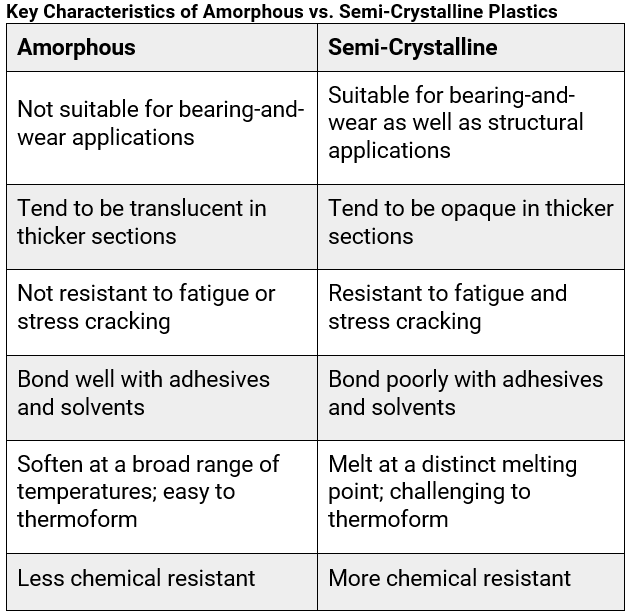
Plastic Selection Guide Chart
This table gives information on common applications and characteristics for some of the most widely used plastics.
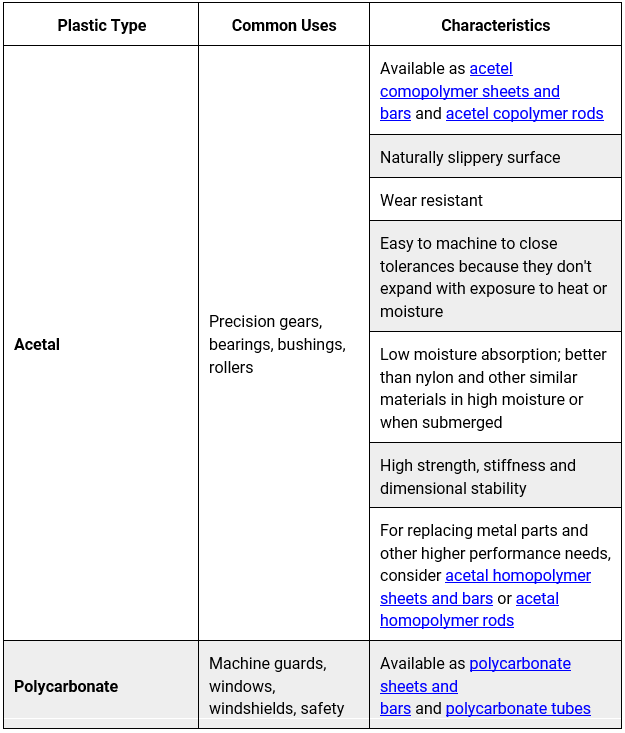
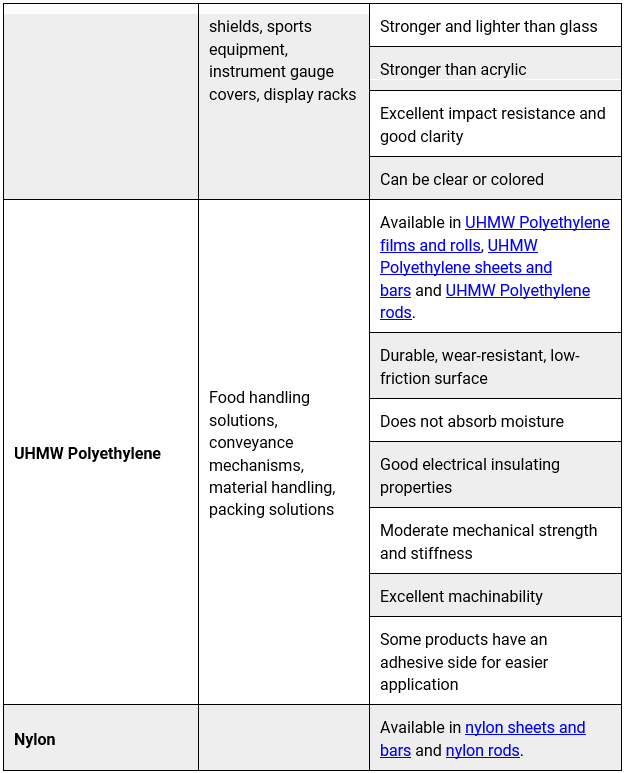
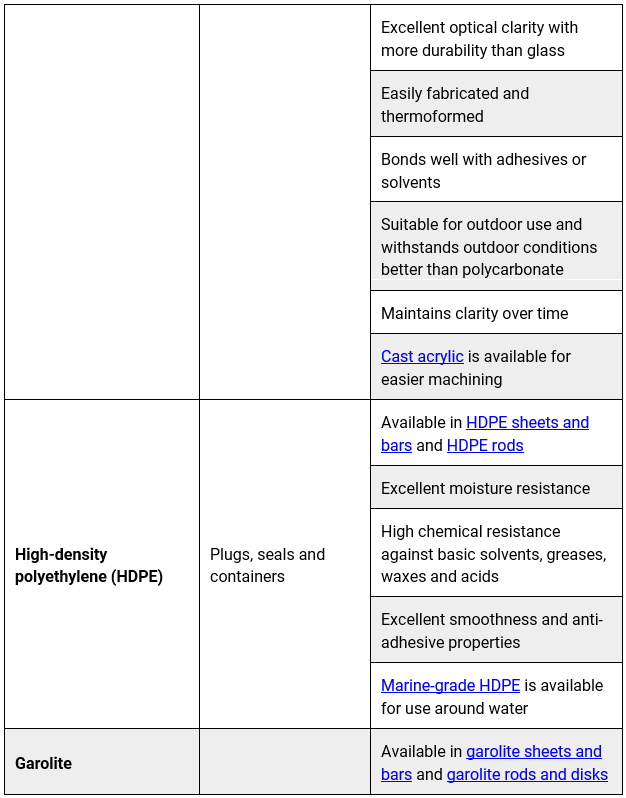
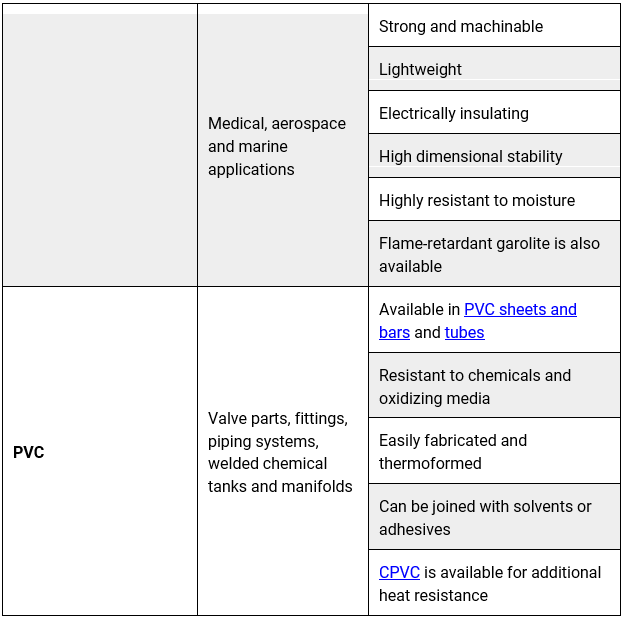
Other plastics for fabrication and manufacturing include ABS, carbon fiber, HIPS, LDPE, PAI, PEEK, PEI, PETG, polypropylene.
Selecting by Form
You can also select a plastic by thinking about the form as a starting point. Rods, sheets, tubes and films are among the most commonly used shapes, but there are many other plastic forms.
The information contained in this article is intended for general information purposes only and is based on information available as of the initial date of publication. No representation is made that the information or references are complete or remain current. This article is not a substitute for review of current applicable government regulations, industry standards, or other standards specific to your business and/or activities and should not be construed as legal advice or opinion. Readers with specific questions should refer to the applicable standards or consult with an attorney.
Source: Grainger Know How – https://www.grainger.com/know-how